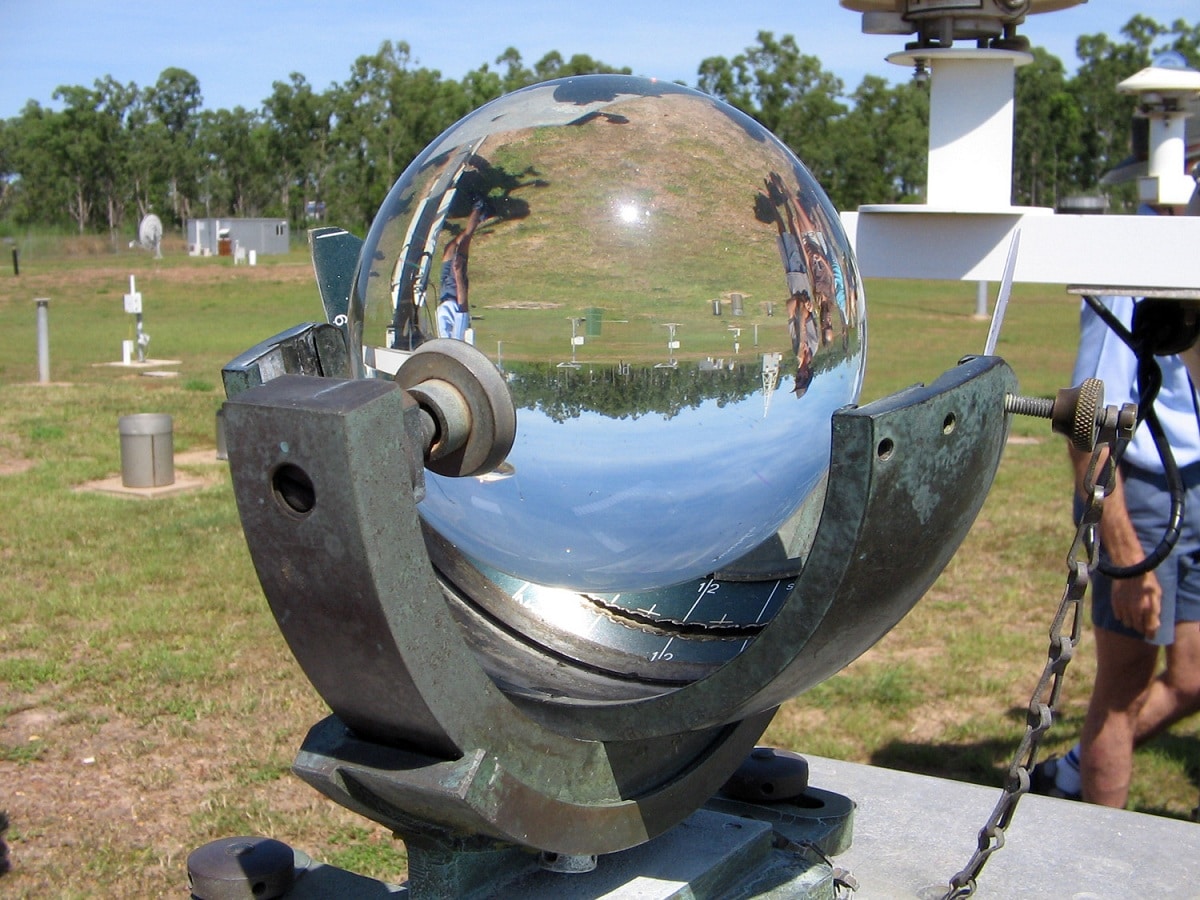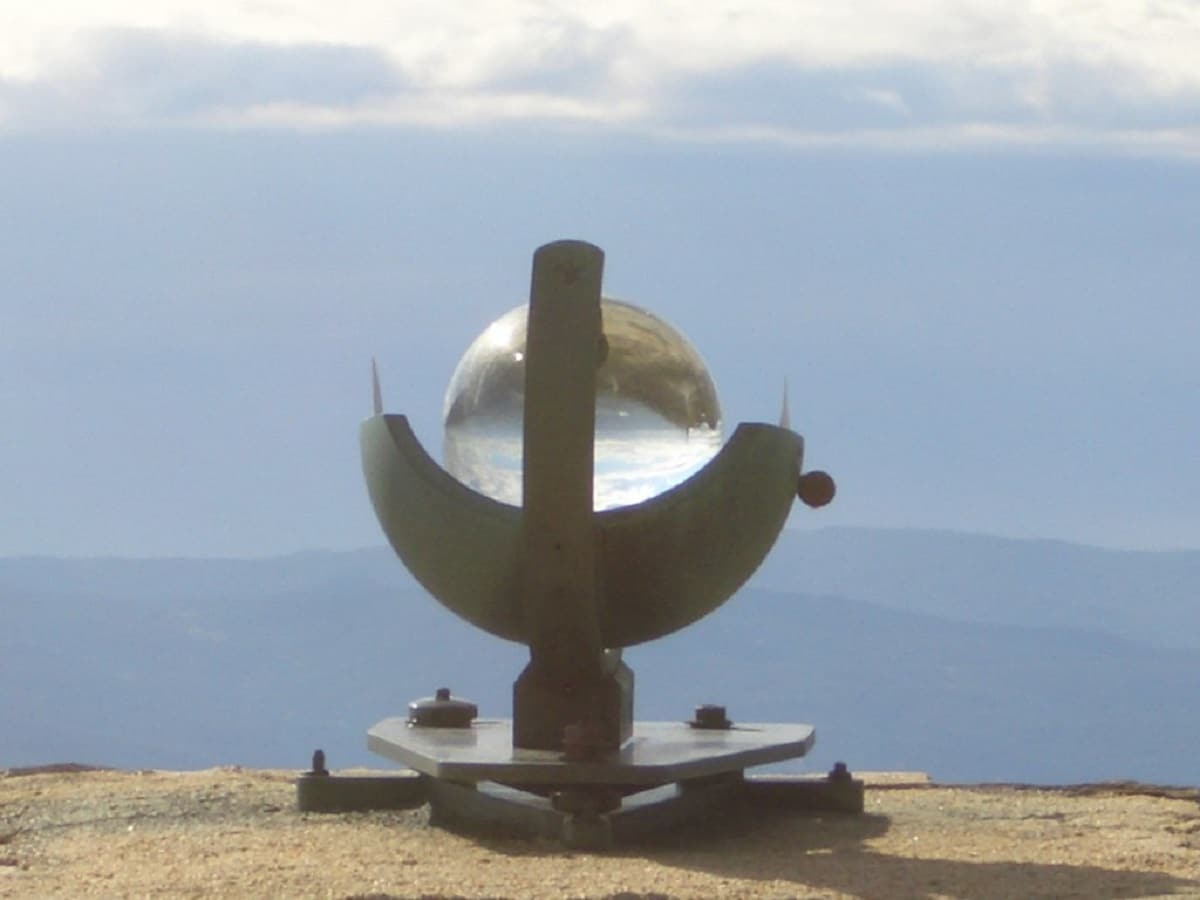
One of the most used devices to measure insolation is the Heliograph. Sunstroke is the number of hours the sun has shone in a certain place during a day. Thanks to this device, the sunlight that falls on an area can be recorded after two days. In this way, the duration of two days is known completely throughout the advance of the seasons.
In this article we are going to tell you what the Heliograph is, what its characteristics are and how it is used.
What is a Heliograph

It is a device used to measure the insolation that reaches a surface on a specific day. Heatstroke is also known for the amount of "effective sun" reaching the surface. This device is composed of a sunlight recorder which consists of a solid glass ball of about four inches in diameter. This massive video ball is used as if it were a lens to be able to concentrate all the sun's rays in a spot near it. As the sun moves across the sky, this spotlight goes through a strip of cardboard that is fixed to a metal frame in parallel to the video.
This strip of cardboard is shaped like a semicircle and is located behind the solid glass ball. The concentration of the luminous and calorific focus traces a line through the more or less accentuated carbonization depending on the intensity of the solar rays. This is how insolation is measured.
In the bands you can see how the works are marked and the half hours of each day. Throughout the day the cardboard is charred while creating a more or less intense line depending on the amount of light that arrives. If he is only constantly flashing due to the presence of clouds, the light bulb does not act and therefore the burn line is interrupted. If the cloudiness disappears again, the carbonization of the cardboard returns to resume.
By adding the lengths of the lines that are burned throughout the day, you can see the total time of the sun's luminosity and the insolation of the corresponding day. It is known by the name of fraction of insolation to the relationship that exists between the actual insolation of a day and that which would have occurred if the sun had been continuously shining on the ball of the Heliograph.
How to use the Heliograph

This apparatus is placed on a masonry pillar at more or less a height of 1.3 meters from the ground. This is done so that there is no kind of obstacle that can hide it from the sun. A good place to place the Heliograph is one that allows the visibility of the entire zodiac above the horizon at any time of the year. In this way, we can measure the amount of solar insolation from sunrise to sunset.
The Heliograph must be placed in an adjusted way for geographical latitude where we are. Let's not forget that the amount of insolation solar irradiation varies depending on the latitude and the altitude that we are. The sun's rays arrive more inclined as we get closer to the poles. Being totally perpendicular in Ecuador. Usually these appliances are manufactured for a small number of more typical latitudes that investigate insolation. Allowance is made for final tuning by means of a variable latitude device. This is how we manage to configure the Heliograph to work at any type of latitude.
He denied that heliograph adjusts for latitude, it must also adjust for geographic longitude. The best way to do this is based on the equation of time. This action is in charge of calculating with enough accuracy the time the sun passes through the median of a specific place. If the Heliograph is being used and it is not properly adjusted, the marks or burns will not be parallel to the center line of the same. Thus, We run the risk of losing insolation data and not having exact measurements.
When the sun varies in height throughout the year, the focus of the Heliograph shifts accordingly. This means that in the metal frame that is provided with grooves and guides, we see how it can be adjusted in search of the most suitable position to be able to facilitate calculations at each time of year.
The bands of the Heliograph are flat zonal stripes. These bands are narrow so that they can coincide with almost any area of the sphere.
How to interpret the data

If the sun has been shining uninterrupted it is quite easy to count the effective hours of sunshine. Just send the length of the charred line and look at the number of hours of direct sunlight. If the sun has shone at intervals, the total insolation should be counted in another way. You need a strip of paper or cardstock that has a well cut edge and is placed next to the heliograph strip. We use a very sharp pencil to be able to mark the lengths that have been burned. The image of the sun will not be. Mathematical, if not a little circle, each of the sections of the center of the semicircle must be taken as the origin and end.
In order not to make mistakes when using these calculations, it is advisable to use a special piece of paper or cardboard that has a template that helps to avoid additional calculations. There are some rules established to count the hours of sunshine by the INM. For example, if the path is cleanly burned, the length of the groove will be reduced by a value equal to half the radius of the curvature of each end.
If the burns are circular, the mean length of the line should be equal to half the diameter of the burn. When the burn is no more than a narrow burn under a single spot, the entire length of the trace must be measured.
I hope that with this information you can learn more about the Heliograph.